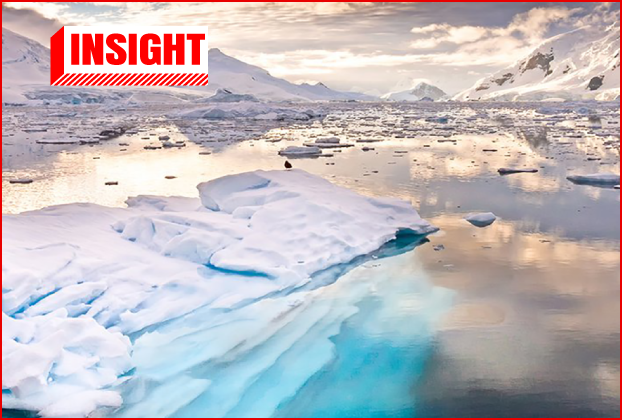Climate scientists make predictions based on the best available data and models, acknowledging inherent uncertainties in complex systems. While certain individual predictions may not always align perfectly with observed outcomes, the overwhelming evidence supporting the reality of climate change remains robust.
Climate change, driven largely by human activities such as burning fossil fuels, poses significant risks to societies and ecosystems worldwide, evidenced by rising temperatures, melting ice caps, and more frequent extreme weather events, despite efforts by some on social media to deny the existence of climate change.
Social media posts
Social Media Users shared a video of a woman criticizing some climate change-related predictions and carbon taxes, with the message, “Woman absolutely nails the Climate Scam Agenda against one of the best beats ever produced. Are you starting to understand yet? You’ve been lied to all your life. Climate Change is a hoax to tax you more, this time with even more sinister undertones now ‘they’ are ramping it up.”
In the video, the presenter says that climate activists made the following predictions in the past, yet those predictions did not come true. Based on these, the woman is trying to generalize that all climate change-related predictions are false and there is nothing really existing named “climate change”.The prediction list is below.
1960 – The oil will be gone in 10 years
1970 – there would be another ice age within ten years
1990 – the ozone layer would be gone within ten years
2000 – Ice caps will be gone in 10 years
As she claims in the video, these predictions are made to get income from carbon taxes.
We decided to do a fact-check on this.
Fact-Checks
The post highlights a series of past predictions about environmental issues, such as oil depletion, ice ages, and ozone layer depletion, suggesting that these predictions were false and were merely tactics to implement carbon taxes.
1. 1960 – Predictions of Oil Depletion:
There were indeed concerns about oil depletion in the 1960s, particularly with the rapid increase in oil consumption. The first discussion about oil depletion was started by Hubbert in the 1950s. Then, in 1998, Colin Campbell and Jean Laherrere’s article in “Scientific American” reignited interest in peak oil, marking the start of the second cycle of interest in oil depletion and claiming that crude oil availability would drastically decline shortly.
Campbell and Laherrère stated in their article that the world’s crude oil output would peak in 2004 or 2005 and then begin an irreversible decline. They revised Hubbert’s model with updated reserve estimates. Colin Campbell used the phrase “peak oil” to refer to the world’s maximum level of oil production shortly afterwards.
Over the next ten years, the word would gain popularity and spark a genuine movement of ideas known as the “peak oil movement.” These forecasts now appear to have been only partially accurate, mostly due to an underestimation of the significance of “non-conventional” oil.
Although the role of non-conventional oil sources was not correctly evaluated, and the date of the peak was missed at the global level, correct predictions and, generally speaking, a helpful warning of impending difficulties were produced by the Hubbert theory.
The claim is somewhat correct; however, given that we all encounter depletion daily, the concept makes sense. For instance, if there is a set quantity of beer in a bottle and we drink some of it, the beer will eventually run out.
Depletion affects all resources that are extracted more quickly than they are created, so it is not just non-renewable resources that experience depletion. For instance, wood can be thought of as renewable, but if deforestation occurs more quickly than it is replenished, the resource will run out sooner than expected.
Only when the rate of extraction is less than or equal to the rate of resource incrementation can a resource be classified as renewable. Since fossil fuels can only be replenished over geological epochs, the depletion of these resources is irreversible in all real senses.
2. 1970 – Ice Age Predictions:
While some scientific studies in the 1970s suggested the possibility of an impending ice age, these predictions were not widely accepted within the scientific community. The majority of climate scientists have consistently warned about the risks of global warming due to greenhouse gas emissions, which contribute to climate change.
In the 1960s and 1970s, climate science did not exist as it does today. The Intergovernmental Panel on Climate Change, which won the Nobel Prize for its work, was an integrated enterprise that began as disparate scientific studies conducted by lone groups of scientists. The measurement of variations in atmospheric gases, such as carbon dioxide, and the potential climatic changes that could arise presented a challenge to atmospheric chemists and modellers. In the meantime, paleoclimate scientists and geologists worked to determine when and why the Earth entered and exited ice ages. An enduring popular myth contends that during the 1970s, the community studying climate change was forecasting “global cooling” and an “imminent” ice age. This claim is widely cited by those who seek to discredit the conclusions made by climate scientists today regarding the prospect of global warming.
3. 1990 – Ozone Layer Depletion:
Concerns about ozone layer depletion due to chlorofluorocarbons (CFCs) were indeed raised in the late 20th century.
In comparison to earlier decades, the ozone layer over Antarctica’s Halley Bay research station had lost one-third of its thickness by 1984. The following year, Shanklin and associates Joe Farman and Brian Gardiner published their research, indicating a possible connection to a man-made substance known as chlorofluorocarbons (CFCs) found in cooling devices and aerosols.
The ozone hole got its name from their discovery, which was thinning the ozone layer over Antarctica. Alarm shook the world as word of the discovery spread. Fears that the ozone layer’s depletion would negatively affect human health and ecosystems spurred scientific research and inspired governments around the globe to work together. International efforts, such as the Montreal Protocol, were successful in phasing out CFCs, leading to significant ozone layer recovery. This demonstrates the effectiveness of scientific research, global cooperation, and policy interventions in addressing environmental threats.
4. 2000 – Predictions on melting Ice Caps:
While there have been warnings about the melting of polar ice caps due to global warming, predictions of complete ice cap disappearance within a specific timeframe may have been exaggerated. Nevertheless, scientific evidence consistently shows that polar ice caps are melting at an alarming rate, leading to rising sea levels and other consequences.
The study shows that global ice melt has increased steadily over the previous three decades. In the 1990s, the average annual global ice melt was 0.8 trillion tonnes; by 2017, the average annual global ice melt was 1.3 trillion tonnes. Between 1994 and 2017, there was a 65 per cent increase in the overall rate of loss. In total, the earth lost 28 trillion tonnes of ice between 1994 and 2017.
The two polar regions where this melting of ice has caused the most concern are Antarctica and Greenland. The northern hemisphere experienced 58% of the ice loss, with the remaining 42% occurring in the southern hemisphere.
Lead author Dr Thomas Slater stated in a statement on behalf of the University of Leeds that “even though every region we studied lost ice, losses from the Antarctic and Greenland ice sheets have accelerated the most.” The ice sheets are currently behaving by the Intergovernmental Panel on Climate Change’s worst-case scenarios for global warming. This magnitude of rising sea levels will negatively affect coastal communities this century.
Finally, carbon taxes and other climate policies are designed to internalize the cost of carbon emissions and incentivize the transition to cleaner, renewable energy sources. While carbon taxes may indeed generate revenue for governments, their primary purpose is to reduce greenhouse gas emissions and mitigate the impacts of climate change.
Conclusion
As we reflect on the past century of scientific inquiry into environmental issues, it becomes evident that misrepresentation of scientific findings can lead to misunderstanding and misinformation.
The claim that these environmental issues would cause immediate and catastrophic consequences, such as oil depletion within a decade, is a misrepresentation of the scientific consensus. In reality, the majority of scientists did not make such extreme claims, and any warnings about potential consequences were based on careful research and analysis. Early warnings about environmental issues have led to implementing national and international regulations to mitigate their impact. For example, regulations targeting ozone depletion and climate change have been instrumental in addressing these challenges and protecting the planet.

Title:Unpacking the Truth Behind Climate Change Predictions and Carbon Taxes
Fact Check By: CFC Sri LankaResult: Insight






